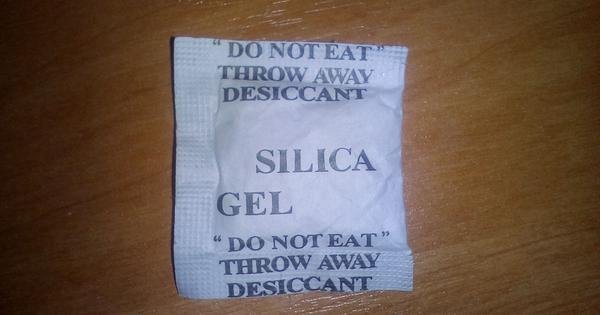Silica Gel: Uses, Safety Tips, and Reusability Guide

Have you ever opened a new gadget, shoes, or medicine and found a small packet with a warning: “Silica gel, do not eat”? Let’s explore what silica gel is, its safety, and its uses.
What Are Desiccants?
That small packet is a desiccant. It absorbs extra moisture from the air. This is important during the transport and storage of various products. Why? Because we can’t always control the environment. Humidity can cause damage like rust, decay, and mold growth.
Manufacturers include these packets to ensure you receive your goods in top condition. The most common desiccant is silica gel. These are small, hard, and transparent beads made of silicon dioxide, similar to sand or quartz. They are hydrophilic, meaning they attract water.
These beads have tiny pores, much smaller than the eye can see. These pores pull in and hold moisture, much like how trees absorb water. Plus, their sponge-like structure gives them a huge surface area. Just one gram of silica gel can cover up to 700 square meters. That’s almost four tennis courts! This makes them super efficient at trapping and storing water.
Is Silica Gel Toxic?
The “do not eat” warning is the most noticeable text on silica gel packets. But are they toxic? According to health experts, most silica beads in these packets are non-toxic. They don’t pose the same risks as silica dust. However, they can be a choking hazard, so keep them away from kids and pets.
If silica gel is accidentally swallowed, it’s still best to contact a healthcare professional. Some types of silica gel contain a dye that changes color when it absorbs moisture. One type uses cobalt chloride, which is toxic. But don’t worry, the dye is only about 1% of the total weight.
Other Types of Desiccants
Besides silica gel, there are other materials used to absorb moisture. These include:
- Zeolites
- Activated alumina
- Activated carbon
These materials are designed to be highly porous. Another common desiccant is calcium chloride. You’ll often find it in moisture absorbers for larger spaces like pantries or wardrobes. It comes in a box filled with powder or crystals and is a type of salt.
Just like kitchen salt attracts water and becomes lumpy, calcium chloride does the same but even more effectively. It “traps” water through a hydration reaction. Once it’s full of water, you’ll see liquid separating in the container.
Oxygen Absorbers: Not Quite Desiccants
Some food items like tortilla wraps, noodles, beef jerky, and certain medicines contain packets labeled “oxygen absorbers.” These aren’t desiccants. Instead, they contain chemicals that bond with oxygen.
Their purpose is similar to desiccants—they extend the shelf life of food and sensitive chemicals. But they do this by preventing oxidation. When some foods are exposed to oxygen, they can decay. Think of how an apple turns brown when cut.
There are various compounds used as oxygen absorbers. These chemicals bond with oxygen more readily than the food or medicine they’re protecting. They range from simple compounds like iron, which rusts by using up oxygen, to more complex ones like plastic films that work when exposed to light.
Can You Reuse Desiccants?
Even though desiccants are often considered disposable, you can reuse them. To “recharge” silica gel, you can place it in an oven at about 115-125 degrees Celsius for 2-3 hours. But don’t do this if it’s in a plastic packet that could melt.
Some desiccants need even higher temperatures to dry out completely. For example, calcium chloride hydrates need temperatures above the boiling point of water to dehydrate.
After drying, silica gel packets can be handy for drying small electronics, like a phone that’s been dropped in water. They can also keep your camera dry or prevent old photos and films from sticking together. This is a better option than using uncooked rice, as silica gel won’t leave any residue.



